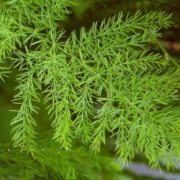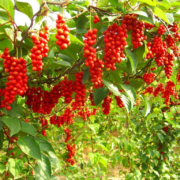Astragalus
BOTANICAL NAME: Astragalus membranaceus
COMMON NAME(S): Huang Qi (Chinese), Milkvetch, Yellow Leader
FAMILY: Fabaceae
PARTS USED: Root
ENERGETICS AND TASTE: Warming, sweet
ACTIONS AND PROPERTIES: Adaptogen, antibacterial, antiviral, diuretic, immune-stimulant, vasodilator, nutritive, Qi tonic (5)
USES & INDICATIONS:
Tonifying and stimulating, astragalus is often affectionately called the “young person’s ginseng.” Like ginseng, it strengthens the qi, or the vital energy of the body. It specifically strengthens the wei qi, or the defensive energies of the body that protect us from pathogens. It works best as a preventative. Taken daily it will strengthen one’s resistance to respiratory infections, viral infections such as shingles, and even Lyme disease. When I lived in Vermont, everyone was using astragalus as a preventative measure to reduce their chances of contracting Lyme.
The polysaccharides in astragalus intensify white blood cell activity, stimulate pituitary adrenal-cortical activity, and restore depleted red blood cell formation in bone marrow (7). In other words, astragalus increases the bone marrow reserve, supporting the deepest layers of the immune system in its fight against pathogens by stimulating the production of immune cells (2).
Another mechanism of action is its ability to increase interferon, a chemical messenger that helps a cell that’s been affected by a pathogen communicate what is is experiencing to other nearby cells so that they can better protect themselves. Although it does have antiviral activity, astragalus should not be used during a fever or acute infection because it closes the pores and doesn’t allow you to break a sweat. When you have a fever that oftentimes will accompany a flu, your body is trying to sweat it out, but Astragalus will not let you sweat it out. In Chinese medicine they say that astragalus can actually drive an infection it deeper into the body, which we don’t want. So Astragalus is a really great plant to take as a preventative medicine, but not in an acute illness.
Though it is a relatively new focus in eclectic American herbalism, astragalus is getting some serious clout as of late for being an adaptogen, an herb that has some normalizing activity, particularly on the immune, nervous, and hormonal systems. It is classified as a “superior tonic” in Chinese medicine and is used in China for treating cancer. Astragalus is part of Fu Zheng therapy, which is often used concurrently with more conventional therapies such as chemotherapy and radiation to treat cancer (3).
Chinese medicine also considers astragalus as lung tonic and is classically used to improve respiratory health and strengthen the vital energy of the lungs in cases of chronic asthma, emphysema or respiratory weakness. Again, it is best used as a daily tonic to support the lungs before or after an illness, but not during the acute phase of an illness.
Five main uses:
- Adaptogen
- Strengthens and rebuilds depleted immune activity
- Chronic lung deficiency
- Antiviral
- Allergic rhinitis and allergic asthma
CONTRAINDICATIONS: Astragalus is contraindicated for those with acute infections. Those with autoimmune conditions should speak with their healthcare provider before using astragalus, as it may stimulate immune function. May also interfere with drugs that are meant to suppress the immune system.
PREPARATION AND DOSAGE:
Decoction : 10 g : 16 fl oz water, decoct 35 minutes, steep 1 hour. 1-2 cups per day
Tincture : Dried root (1:5 40% alcohol), 2-4 mL 3x a day
Glycerite : Dried root (1:8) 10-20 mL 3x a day
Capsule : 1,000 to 3,000 mg 3x a day
ETHNOBOTANY/HISTORY/FOLKLORE/
Astragalus membranaceus is known in China as Huang Qi, meaning “yellow leader.” This name refers to both the colored interior of the root and the plant’s position of prestige among Chinese medicine practitioners. Astragalus is thought to have been used medicinally in China for at least 2,000 years, with its first text appearance in the TCM classic Shen Nong Ben Cao Jing (The Divine Farmer’s Materia Medica Classic). This text is the foundation of TCM, and within it herbs were arranged by type of material (herb, tree, etc), and then graded into categories of potency: upper, middle, and lower. Astragalus was listed in the highest class (3).
REFERENCES:
- Herbal Therapeutics, David Winston
- Foundations of Herbalism, Christopher Hobbs
- Herbrally, Krystal Thompson
- The Practice of Traditional Western Herbalism, Matthew Wood
- History of the Use of Astragalus. http://www.mdidea.com/products/herbextract/astragalus/data04.html
- Medical Herbalism, David Hoffman




